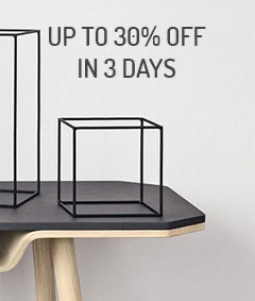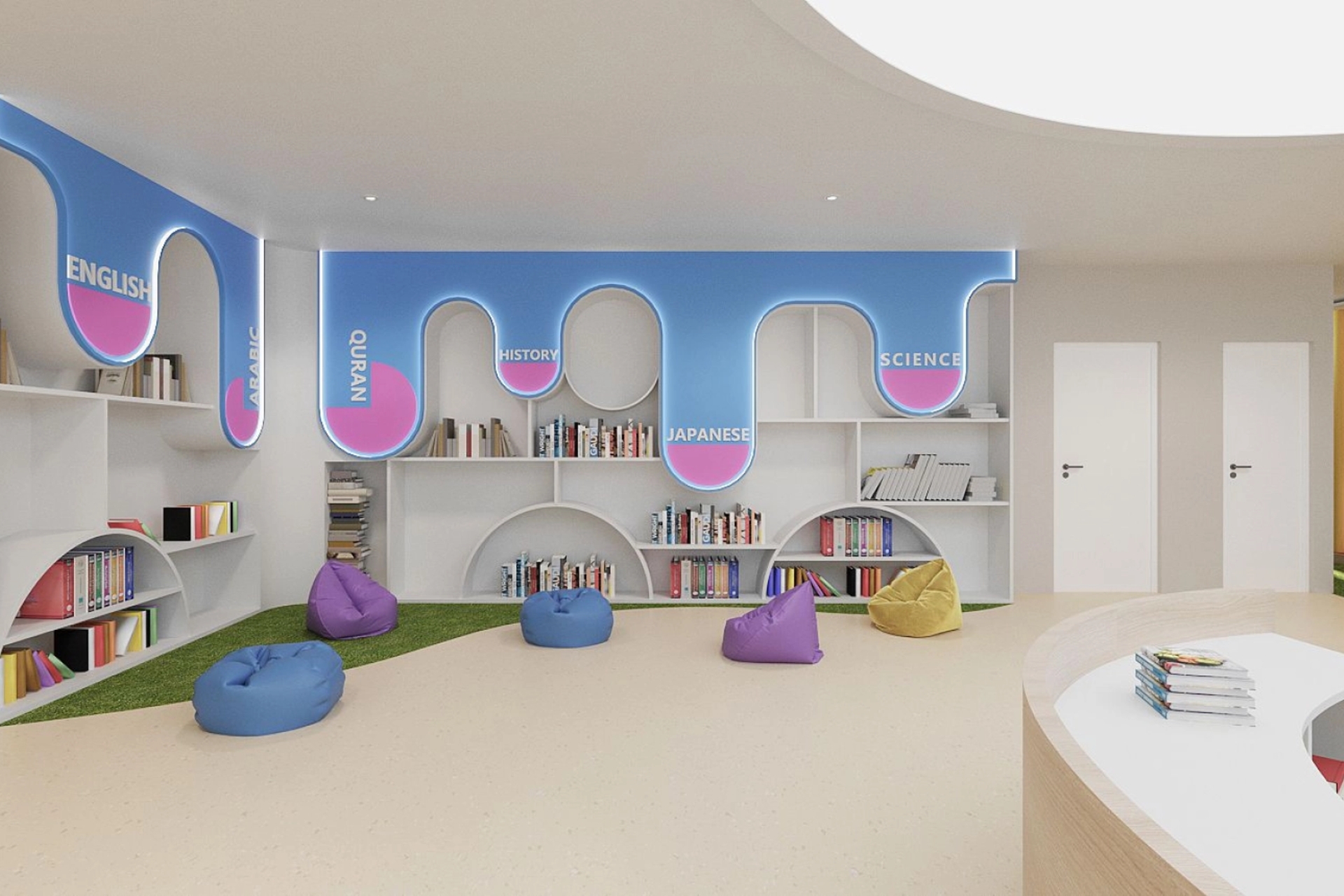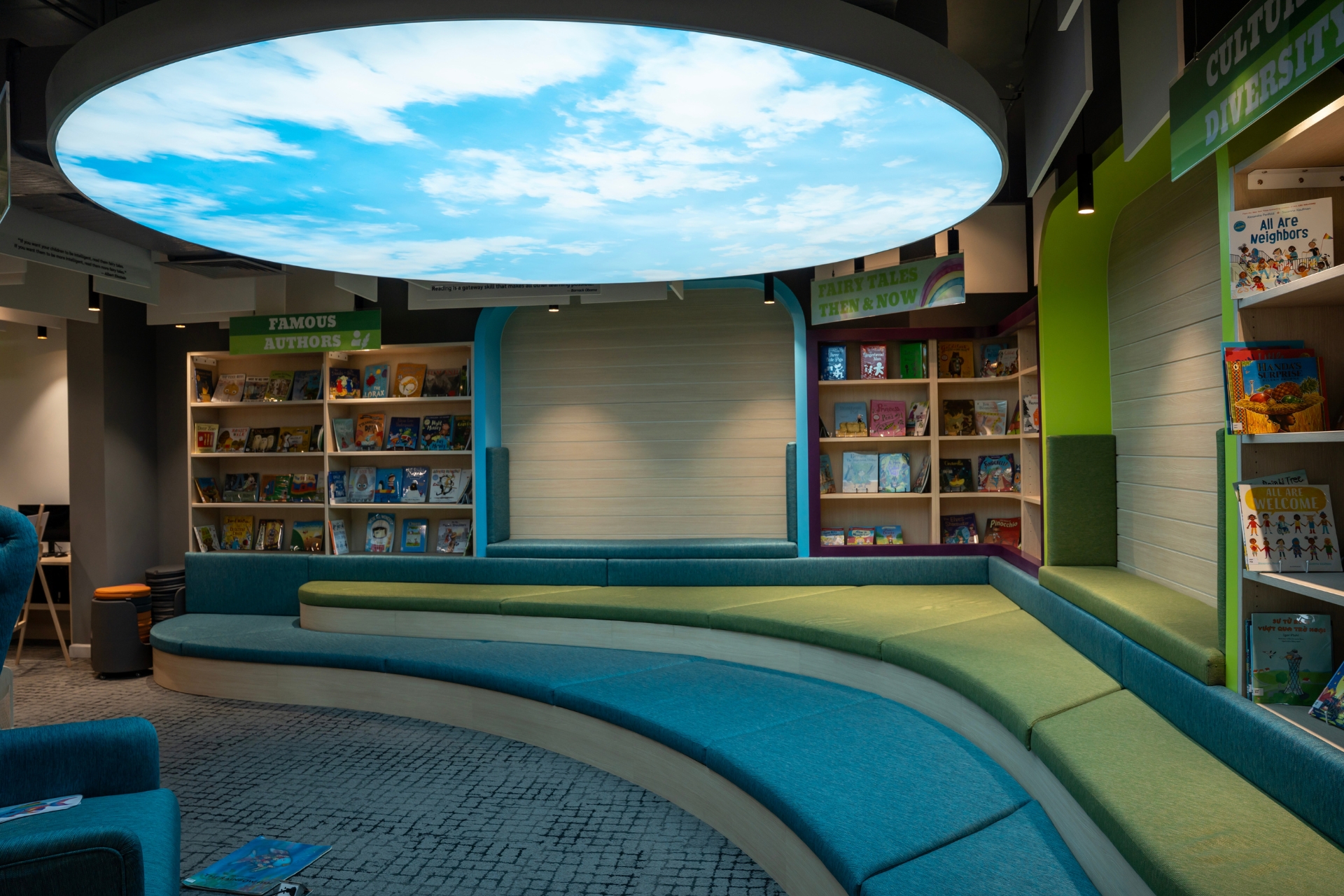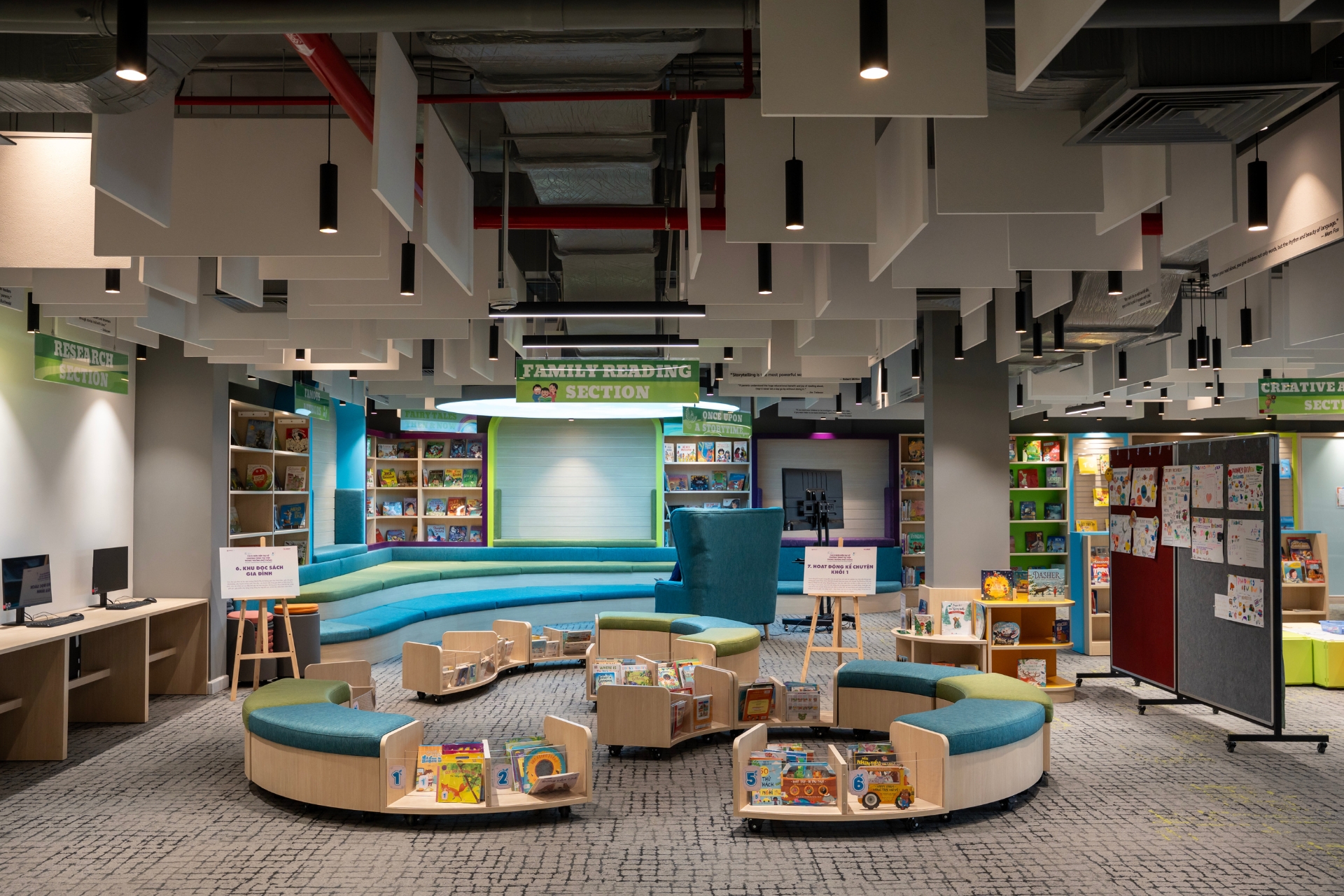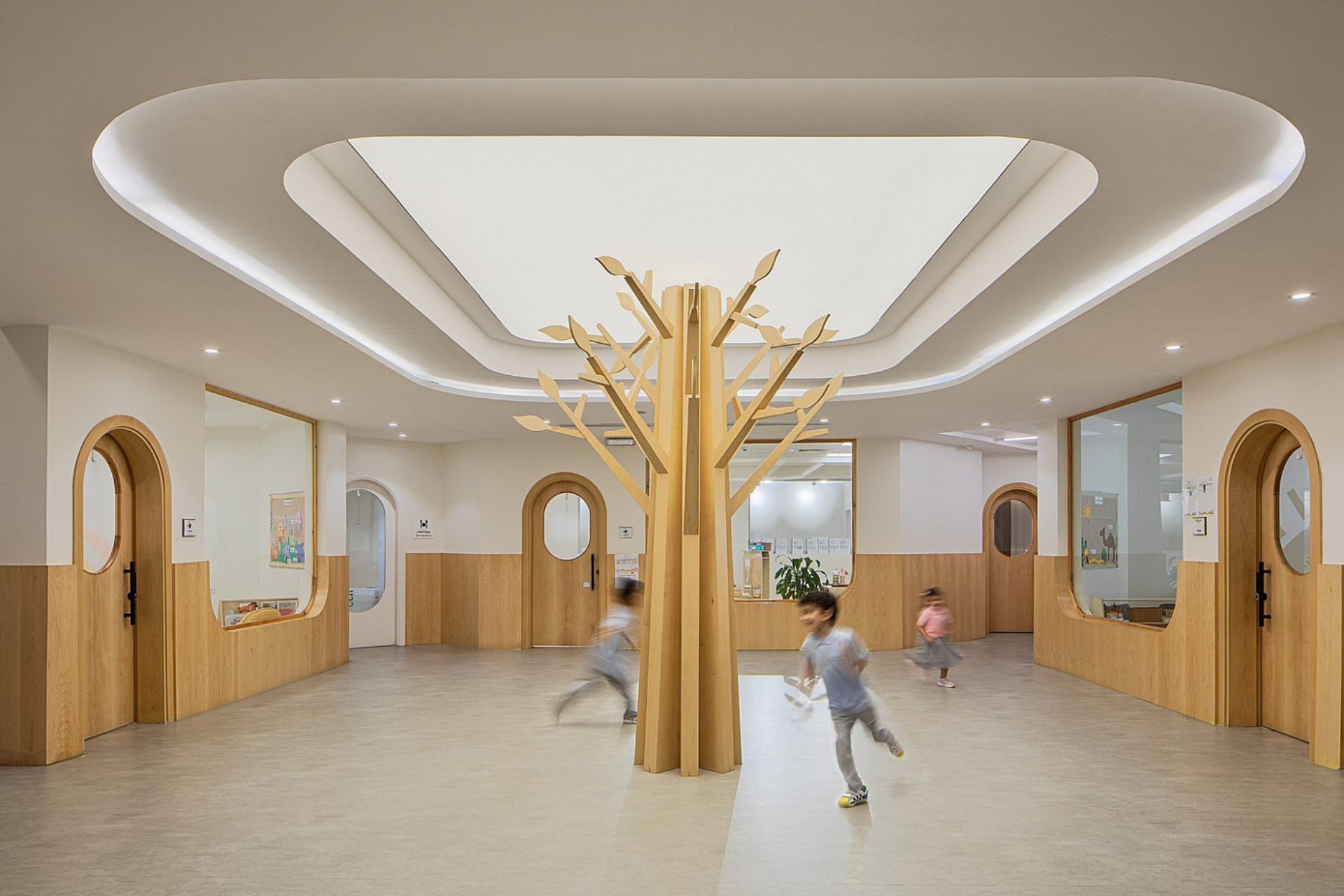
Ideal International Preschool Design Trends for the Future Generation
In the context of early childhood education receiving increasing attention, designing a learning space is no longer simply about constructing a school. More than ever, a kindergarten needs to become a “second home” – a place that nurtures the holistic development of young children. An ideal environment will be a launchpad for imagination, stimulate creativity, and ignite a passion for discovery in children. With that vital role, international kindergarten design trends are making great strides, constantly evolving to meet the most advanced educational standards. Join TECO in exploring groundbreaking international kindergarten design trends that create ideal learning spaces for the next generation.

Discover the Latest International Kindergarten Design Trends
Biophilic Design – A Nature-Connected Approach
One of the most prominent trends in international kindergarten design is the biophilic design approach. Below are some key characteristics of this style:
-
Green spaces: Kindergartens following the biophilic style incorporate a lot of greenery, such as plants, mini vegetable gardens, fairy gardens… integrated into both indoor and outdoor spaces. These green features bring harmony with nature, connect people with the environment, and provide comprehensive developmental benefits for children.
-
Optimizing natural light: Classrooms can maximize natural light through large windows, helping to keep the learning environment bright, airy, and energy-efficient.
-
Eco-friendly materials: The design should prioritize materials such as wood, bamboo, stone, recycled materials, non-toxic paints, and anti-slip floors. This ensures safety and health for children when they directly interact with interior furnishings.
-
Nature-inspired imagery and shapes: Use paintings, wall murals depicting forests, clouds, mountains, animals… Additionally, creatively incorporate organically shaped design elements such as soft curves, bird’s nest spaces, cave-like structures… These nature-inspired features stimulate imagination and curiosity in young children from the earliest years.
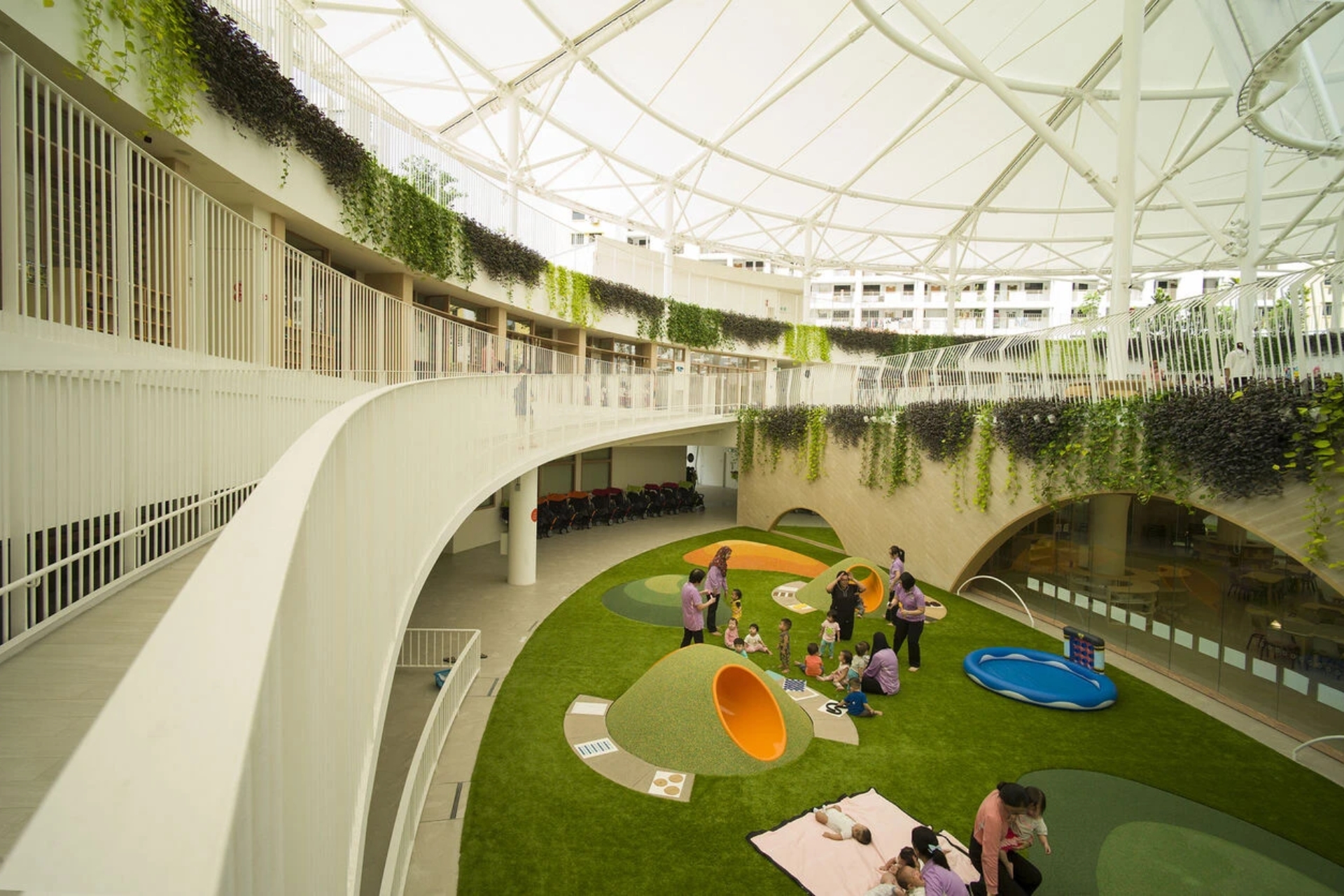
Biophilic design trend
Flexible, Multi-Functional Spaces
This design style emphasizes flexibility and maximizing the use of space for various functions. Specifically:
-
Smart furniture: Use movable tables and chairs, detachable bookshelves, mobile partitions… This allows for quick reconfiguration of classrooms to suit different activities.
-
Multi-functional zones: These are spaces that integrate learning, play, arts, movement, etc., within one large area, allowing children to freely explore their interests and unleash creativity.
-
Child-scaled design: Ensure that all objects, from tables and chairs to sinks, bookshelves, and door handles, are designed at a height suitable for children’s physical size. This enables children to easily serve themselves, enjoy playing, exploring, and developing independence.
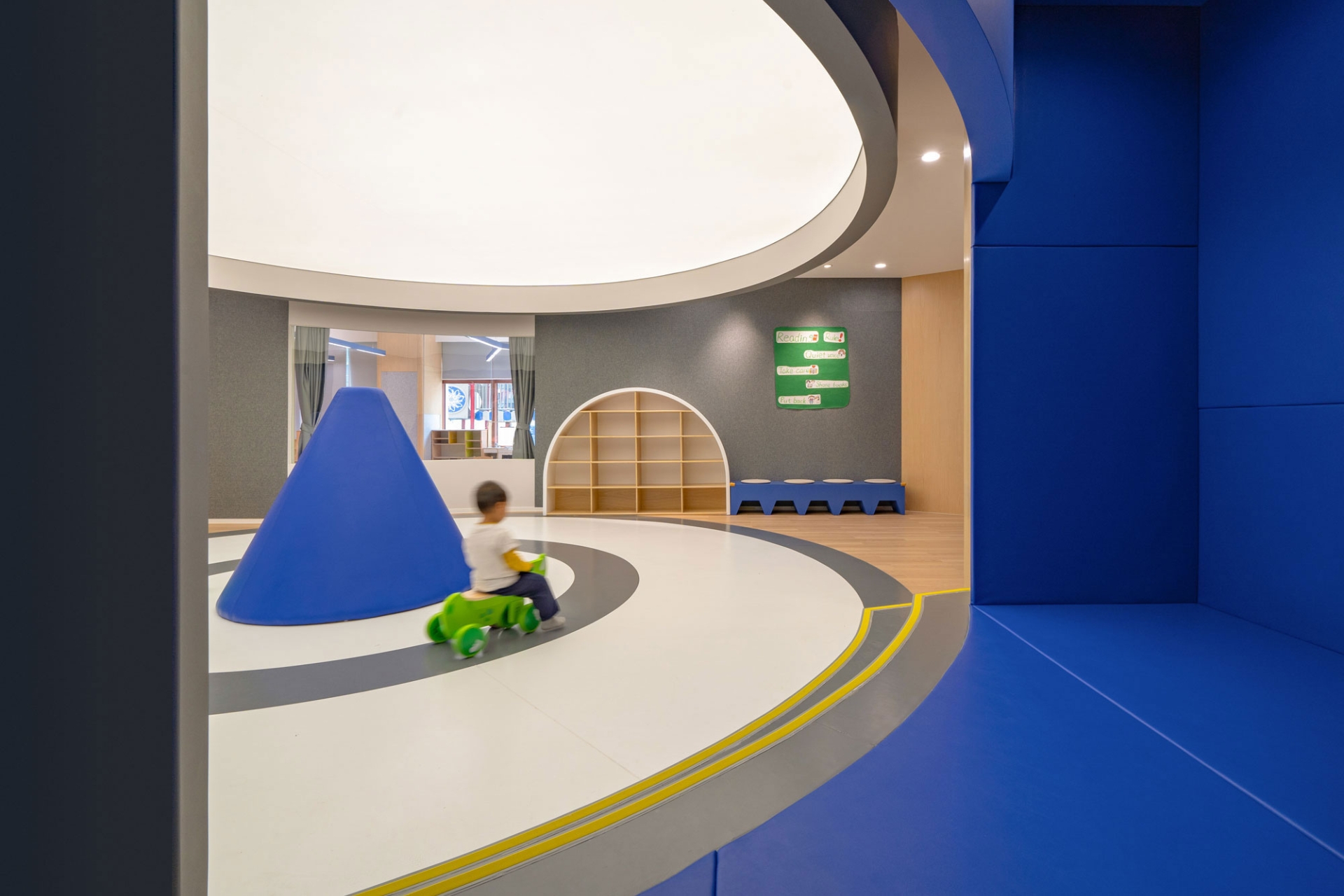
Flexible, multi-functional space
Emphasis on Safety and Sustainability
In design, it is crucial to ensure children’s safety while also maintaining long-term sustainability for the school environment. To achieve this, several key factors should be considered:
-
Safety-conscious design: All furniture corners, walls, and staircases should be rounded. Additionally, floors must be slip-resistant, and windows and corridors should have sturdy railings to ensure safety during children’s playtime.
-
Lighting and ventilation systems: Choose locations with access to natural light and optimal airflow, combined with lighting systems that do not cause glare.
-
Fire safety standards: This is a mandatory factor in any building. It is necessary to equip fire protection systems and emergency exits to ensure safety in emergencies.
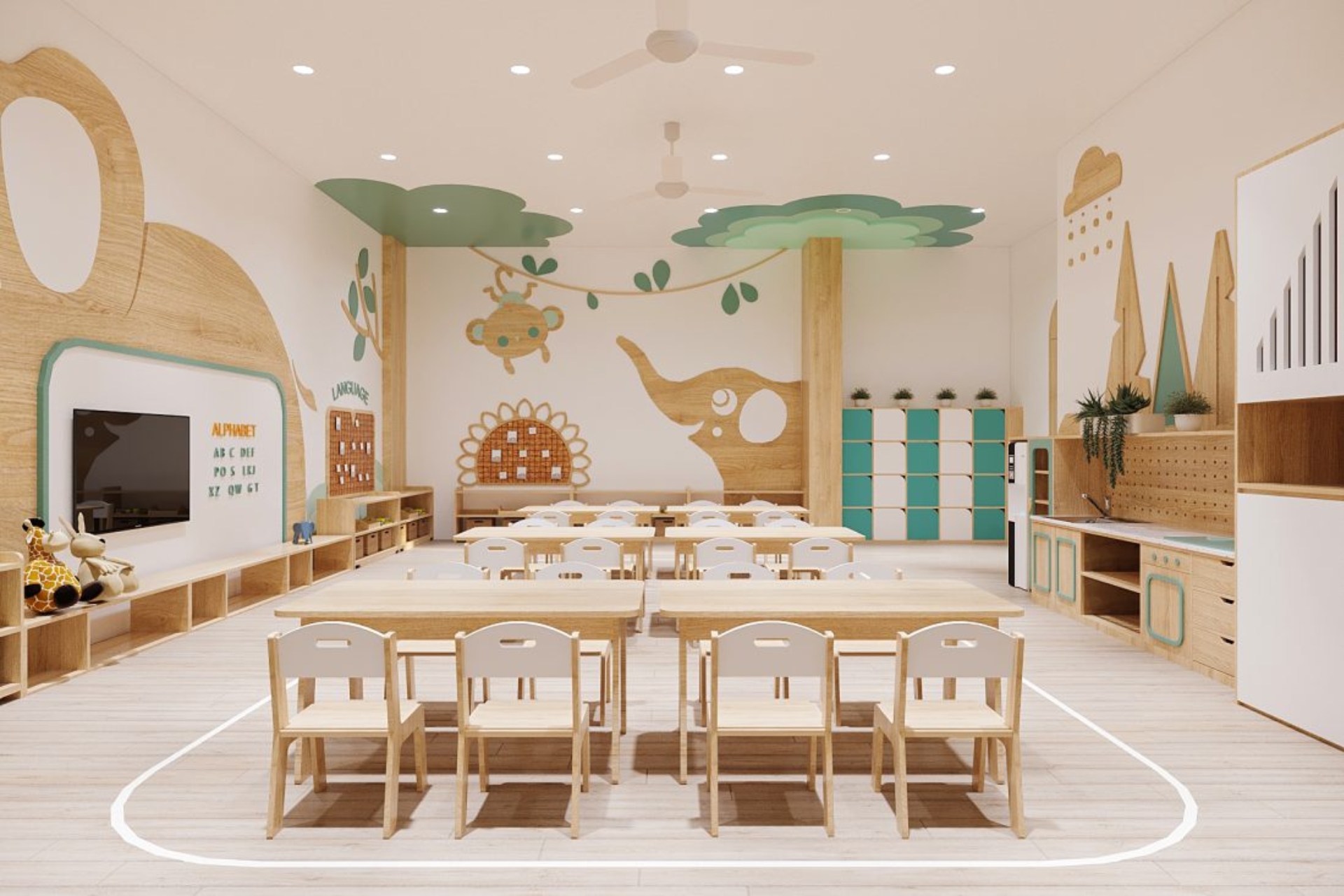
Safety and Sustainability emphasis trend
Design Aligned with Modern Educational Approaches
Each international school may adopt its own educational philosophy. Below are a few popular modern educational models along with their corresponding design characteristics:
-
Montessori: Creates a carefully prepared learning environment where children can move freely, learn independently, and develop at their own pace.
-
Reggio Emilia: Inspired by this method, the design style emphasizes creating a “third teacher” environment, where children are respected and free to explore and express themselves.
-
Theme-based design: Inspired by fairy tales, space, oceans, etc., this creates a colorful space that sparks inspiration and stimulates imagination in children.
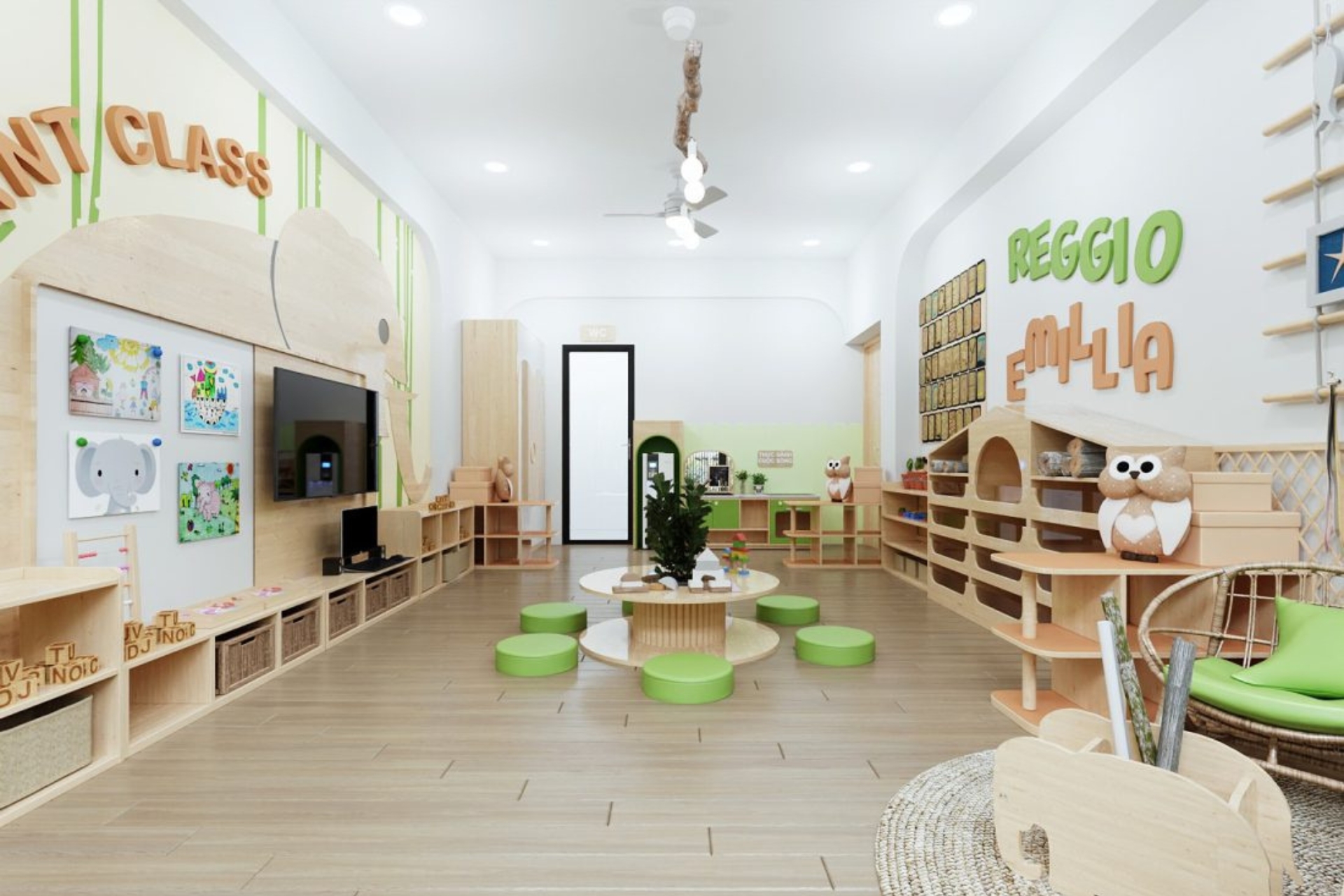
Reggio Emilia educational approach in design.
Conclusion
Overall, international kindergarten design trends share a common goal: to create a holistic educational space where children are encouraged to explore, freely create, and develop essential skills for the future. By harmoniously combining nature-friendly design, flexible spaces, and modern educational methods, today’s kindergartens are not just care centers but also strong launchpads for the development of future generations.
Investing in a high-quality learning environment is the smartest investment for your child’s future.
TECO is proud to be a reputable design and construction unit for international and bilingual schools, with extensive experience in the educational field. Notable school design and construction projects include Horizon Bilingual School, EMASI Plus International Boarding School, and more.
Contact TECO for dedicated consultation on design and construction solutions for your school
